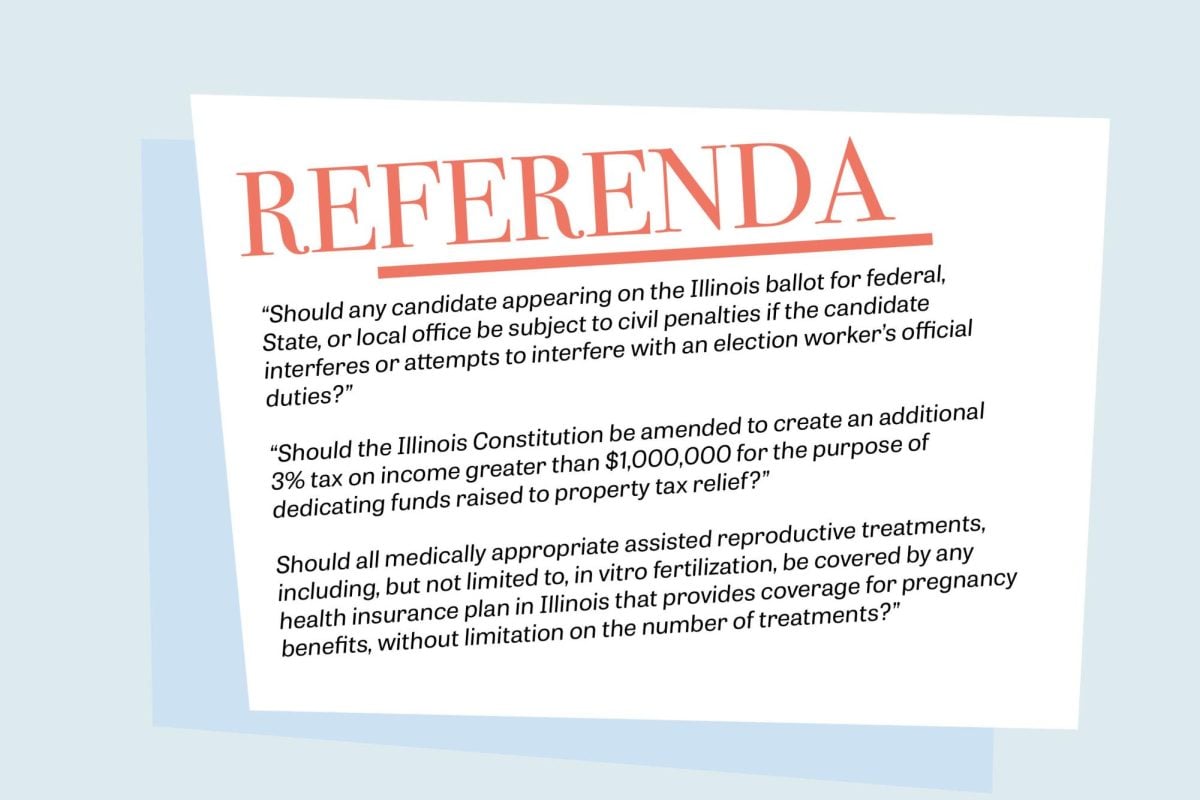The Federal Emergency Management Agency and the Federal Communications Commission joined forces Wednesday to perform a national test of the Emergency Alert System for the first time since it was created 14 years ago.
The test began promptly at 1 p.m. and lasted for about two minutes on campus, temporarily taking over broadcast, cable and satellite television and radio stations in Evanston and across the country.
During the test, television screens in Fisk Hall, 1845 Sheridan Road, and the McCormick Tribune Center, 1870 Campus Dr., showed the following message:
“This is a test of the emergency alert system. Had this been an actual emergency, the attention signal you just heard would have been followed by emergency information, news or instructions. This is only a test.”
CNN reported Wednesday some isolated problems and glitches appeared during the test, which was supposed to last for only 30 seconds. There were anecdotal reports that some stations did not air the emergency message. In other places, including Northwestern, the message lasted longer than planned.
An unnamed FCC official told CNN 80 to 90 percent of stations successfully received and rebroadcast the alert.
Mark Peterson, external affairs officer for the FEMA region that includes Illinois and five other Midwest states, said the Emergency Alert System is often used by states or local municipalities. It has never been tested on a nationwide basis, he added.
“The system has been tested and used at the local level for weather reports and amber alerts in the past,” Peterson said. “But this is the first time that it’s been exercised across all of the broadcast capabilities throughout the entire country at the same time.”
FEMA previously said the test would help “determine the reliability of the system and its effectiveness of notifying the public of emergencies and potential dangers,” according to a news release issued Sunday by the city.
Division Chief Tom Janetske, Evanston’s emergency preparedness manager, said the test Wednesday was “important” but also said he would like to see more testing on a regional scale in the future.
“I think it would be more beneficial for regional testing as opposed to nationwide testing,” Janetske said. “I’d like to know the capabilities that the government has at a regional level. That would be more beneficial in an emergency preparedness situation if we had a regional disaster that didn’t affect the entire country.”
Janetske added Evanston has “several different capabilities” for alerting the community of emergencies.
The city has a reverse calling system, through which residents receive emergency alerts, that can target specific Evanston neighborhoods. Janetske said the system is “extremely accurate” and can be calibrated to dial phones on specific blocks. The city also has the ability to override cable television and place a “crawler” with emergency information on the bottom of the screen of cable channels.
A-Reum Han, the city’s emergency response coordinator, deferred to FEMA for comment about the system test because the city “doesn’t have anything to do with it.” She added that the local system is “regularly updated and tested.”
Some Twitter users noted the Emergency Alert System includes radio and television but omits mobile communication and social media. Janetske said city officials have “entertained the idea” of utilizing social media for dissemination of emergency information.
“When we have specific events like blizzards that would warrant notifications, our staff does try to put that out on Twitter and other social media networks,” he said. “We just don’t always have the resources to be as timely as it would be if it were automated.”
FEMA spokesperson Peterson also said the test provided an opportunity to raise awareness for overall emergency preparedness.
“This is an opportunity for folks to think about their own personal individual preparedness and how they can prepare for the unknown,” he said. “If there was a real national emergency, people should make a plan of what they would do.”






